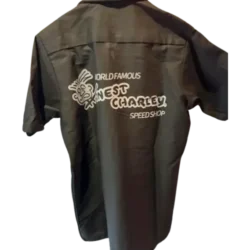Fuel and Fire–Performance Tips for your Vintage Engine

The internal combustion engine needs a few things to operate, and the two main ingredients are fuel and fire. The mixture of fuel and air, and the way the engine ignites it are very important aspects of getting every ounce of performance out of an engine. Modern engines can be tweaked with a computer, but old school engines, like the Ford Flathead, small block Chevy or Buick Nailhead respond to mechanical changes.
One of the easiest modifications you can make is increasing the amount of spark produced by the ignition system. While this may not give you a seat-of-the-pants horsepower increase, it certainly makes for a much happier engine. In the hot rod world, it’s better to have too much than not enough, and the same can be said for the amount of spark in an old engine. MSD makes drop-in, ready-to-run billet distributors for a bunch of applications, and they get our vote for simplicity and performance. One of the new products from MSD is a ready to run billet distributor for a Ford Flathead. We recommend it, especially if you are dealing with a Flathead with a little more umph than ol’ Henry gave it. Mallory is another good choice for electronic ignition products,
Fuel on the other hand–well, you can easily have too much fuel and cause yourself a world of trouble. We offer a lot of carburetors and fuel system products to get your hot rod running right. One of the most common tuning and performance problems with a vintage engine includes too much fuel. Sticking a Holley 750cfm double pumper on a mildly built 283ci small block Chevy is a mis-matched combo and you wouldn’t believe how often it happens. Even a modified 350ci small block Chevy would likely run a little rich with a 750 on top, unless it was jetted way down. In all reality, a mildly built 283ci small block Chevy could use a 450cfm carburetor and something in the 350ci range would benefit from a 650cfm carburetor. With that said, it gets even more confusing when you start talking multiple carburetors. We’ve seen upward of eight Stromberg 97 carburetors on an engine. Stock style Stromberg 97 carburetors are rated at 150cfm, so you’re looking at approximately 1,200cfm when eight Strombergs are in place. You’d need one serious motor to efficiently use all that cfm, but it sure looks cool, even if it’s belching soot out of the pipes at idle.
We’ve also seen three deuce setups be a little lean on the fuel side, as 450cfm may not be enough for some engines. That’s why we started carrying the new Stromberg BIG97 carburetor. It’s a carburetor that looks just like a regular 97, but it features a lot of cool internal updates to increase its flow rating to 250cfm. That means a warmed up Flathead with two of these bad boys will really scoot down the road. A healthy small block Chevy, Olds or Pontiac mill could use up to three BIG97 carburetors.
-

Honest Charley Sticker
$1.25 – $3.25 Select options This product has multiple variants. The options may be chosen on the product page -

Honest Oval T-Shirt | White
$21.95 – $25.95 Select options This product has multiple variants. The options may be chosen on the product page -

Honest Retro Oval Speed Shop T-Shirt | Navy
$21.95 – $25.95 Select options This product has multiple variants. The options may be chosen on the product page -

Honest PoweRed T-Shirt | Gray
$22.95 – $25.95 Select options This product has multiple variants. The options may be chosen on the product page -

TN Brewed T-Shirt
$21.95 – $25.95 Select options This product has multiple variants. The options may be chosen on the product page -

Honest Oval T-Shirt | Blue
$21.95 – $25.95 Select options This product has multiple variants. The options may be chosen on the product page -

Honest Rat Rod Shirt
$21.95 – $25.95 Select options This product has multiple variants. The options may be chosen on the product page -

Flathead V8 Ash T-Shirt
$21.00 – $25.95 Select options This product has multiple variants. The options may be chosen on the product page -

Honest Charley Speed Shop Patch Key Fob
$4.95 Add to cart -

Honest Charley Speed Shop Logo BLACK Hoodie
$45.00 – $49.00 Select options This product has multiple variants. The options may be chosen on the product page -

Honest Charley Speed Shop License Plate Tag
$12.95 Add to cart -

Honest Charley Speed Shop Metal Sign
$45.00 – $75.00 Select options This product has multiple variants. The options may be chosen on the product page -

Jumbo Honest Charley Sticker 9″ x 4″
$5.00 Add to cart -

Honest Charley Mesh Baseball Hat – Black
$29.00 Add to cart -

Honest Charley Magnet
$3.00 Add to cart -

Honest Charley Speed Shop License Plate Frame
$21.95 Add to cart -

El Camino SS Complete Front Nose Kit – Call To Reserve!
$2,995.00 Add to cart -

Coker Museum Tan Hat
$24.00 Add to cart -

Coker Museum Sticker
$1.25 – $3.25 Select options This product has multiple variants. The options may be chosen on the product page -

Honest Charley Onesie – Black
$19.95 Select options This product has multiple variants. The options may be chosen on the product page -
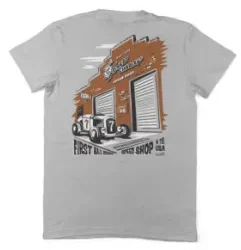
Store Front Short Sleeve T-Shirt
$22.95 – $25.95 Select options This product has multiple variants. The options may be chosen on the product page -

Honest Hisself Short Sleeve T-Shirt
$21.00 – $25.95 Select options This product has multiple variants. The options may be chosen on the product page -
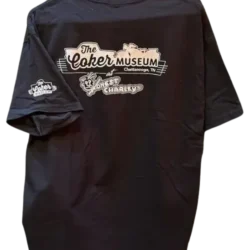
Honest Charley Coker Museum Dual Logo Black Short Sleeve T-Shirt
$21.95 – $25.95 Select options This product has multiple variants. The options may be chosen on the product page -

Honest Charley – Stainless Steel Tree or Mirror Ornament
$12.00 Add to cart -

Honest Charley Retro Hat – Black Mesh
$29.95 Add to cart -

Dark Grey Honest Charley Zip Up Lightweight Hoodie
$49.00 Select options This product has multiple variants. The options may be chosen on the product page -
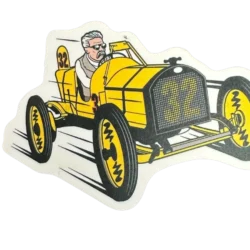
1911 Marmon Wasp with Corky Coker
$4.95 Select options This product has multiple variants. The options may be chosen on the product page -

Coker Museum Magnet
$4.95 Add to cart -

Coker Museum Print Fleece
$54.99 Add to cart -
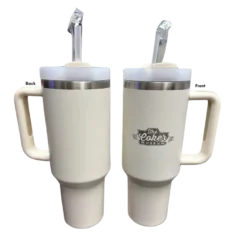
Travel / Tumbler Cup
$29.95 Select options This product has multiple variants. The options may be chosen on the product page -
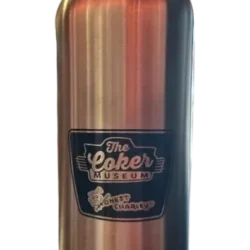
Insulated Stainless Water Bottle with Honest Charley Coker Museum Logo
$20.95 Add to cart -

Honest Charley Work Jacket
$100.00 – $110.00 Select options This product has multiple variants. The options may be chosen on the product page -

Honest Charley Toddler/Infant Pink T-Shirt
$19.95 – $21.00 Select options This product has multiple variants. The options may be chosen on the product page -
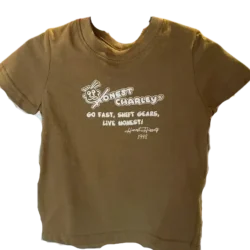
Honest Charley Toddler Brown T-Shirt
$21.00 Select options This product has multiple variants. The options may be chosen on the product page -

Honest Charley Toddler Black T-Shirt
$19.95 – $21.00 Select options This product has multiple variants. The options may be chosen on the product page -

Honest Charley Neon Clock
$395.00 Select options This product has multiple variants. The options may be chosen on the product page -

Honest Charley Mesh Hat
$29.95 Add to cart -

Honest Charley Brown Onesie
$19.95 Select options This product has multiple variants. The options may be chosen on the product page -
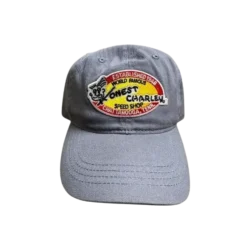
Honest Charley Blue – Full Color HC Patch
$29.95 Add to cart -

Honest Charley Autumn Crewneck Sweatshirt
$49.00 Select options This product has multiple variants. The options may be chosen on the product page -

Honest Charley – Coker Museum Koozie’s
$5.00 Select options This product has multiple variants. The options may be chosen on the product page -

Honest Charley Yellow Snap Back Hat
$29.95 Add to cart -

Honest Charley – Coker Museum Pocket Journal and Pen set
$8.50 Add to cart -

Grey Honest Charley Coker Museum – Chattanooga – Long Sleeve Shirt
$28.95 – $33.95 Select options This product has multiple variants. The options may be chosen on the product page -

Coker Museum Short Sleeve T-Shirt – Black
$21.00 – $25.95 Select options This product has multiple variants. The options may be chosen on the product page -
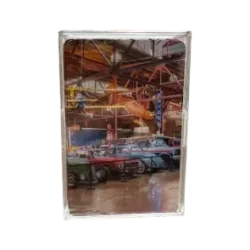
Coker Museum Playing Cards
$11.99 Add to cart -

Coker Museum Blue/Grey Hat
$29.95 Add to cart -

Black Honest Charley Hoodie with Pockets
$45.00 – $49.00 Select options This product has multiple variants. The options may be chosen on the product page -
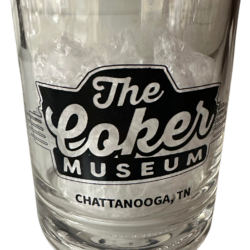
Coker Museum 12 oz Silicone Beverage Glass
$25.99 Add to cart -

Coker Museum Mesh Baseball Hat – Gray
$24.00 Select options This product has multiple variants. The options may be chosen on the product page -

Honest Charley Onesie – Gray
$21.00 Select options This product has multiple variants. The options may be chosen on the product page -

Honest Charley Speed Shop Gift Certificate
View products


